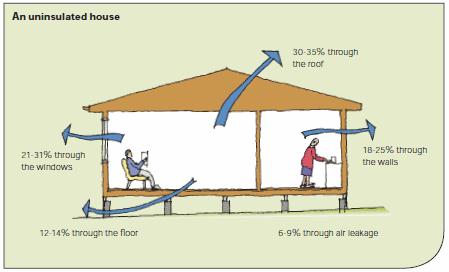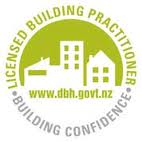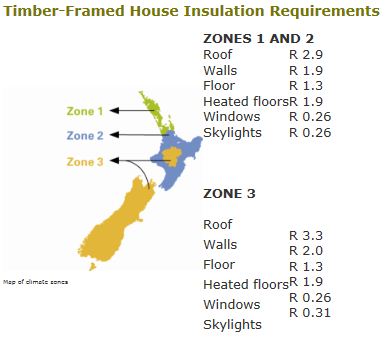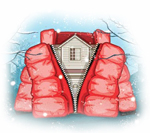What's the best kind of insulation
for your home?
Not all insulation is created equal. When considering the ideal insulation for your home, you need to weigh up a range of factors - your home's structure, legal requirements for insulation, the insulation's effectiveness, the cost, potential government subsidies, health and safety considerations, and environmental impact. We give you the low-down on the options available.
There are so many different types of insulation available, how can you choose between them? Here's a sample:
- Wool
- Glass wool
- Rock wool
- Polyester blanket
- Polystyrene sheet
Depending on your situation and needs, you may need more than one type of insulation, making the choice even more difficult!
Here are the main factors you need to consider:
 1. Your home's structure
1. Your home's structure
The diagram below is a useful guide to insulation priorities if you own a typical New Zealand timber home, but the priorities may vary if your home is built from brick or concrete block, or has a concrete floor. Access is also an issue. Obviously you can't use blanket-type insulation in places you can't access - inside a flat roof or sealed wall space, for example - and will need to consider blown-in alternatives if you don't want to go to the trouble and expense of pulling off panels for access.
From http://www.smarterhomes.org.nz/design/insulation/
2. The legal requirements for insulation in your area
If you're building a new home, or are making alterations or additions to your existing home, you will need to comply with the insulation regulations set down in the building code for the zone you live in, as per this map.
The minimum R-rating (see below for an explanation of what this means) varies from zone to zone. For a summary of the R-rating requirements, go to Quick Energy Guide.
 3. The performance of your insulation
3. The performance of your insulation
This is measured by the 'R value'. The higher the R value, the better the insulation will be at containing heat. If you have an existing home which is insulated but seems colder and damper than it should be, you may want to check that the insulation is installed correctly and hasn't suffered from reduced performance over time. Some types of insulation can shrink, creating gaps that let the heat through. Loose insulation like blown rock wool can shift, again opening up gaps or areas where the insulation is too thin to be effective. The best solution in these cases is to replace the insulation, but you may be able to re-install it or "top it up" with new insulation.
Other questions to ask about the performance of your insulation are:
- Is it non-combustible/fire resistant?
- Is it vermin resistant?
- Will it stay mould-free and not rot?
- Will it continue to perform to the same standard over the long term?
- Has it been independently verified or tested?
- Is it easy to fit if you are doing it yourself?
- Is it non-toxic/non-irritant?
 4. The cost of your insulation
4. The cost of your insulation
The only way to compare the cost of different insulation types is to consider how much of each type will be needed to achieve the same R-value, and then use two measures - material cost per square metre and installation cost per square metre - and then them together. Some insulation can be installed yourself, others have to be professionally installed. For ceiling and underfloor insulation, the Warm Up New Zealand Heat Smart programme provides subsidies for installing insulation in houses built before 2000. Visit the Energywise to find out more.
5. Health and safety considerations
Despite assurances by the manufacturers to the contrary, some believe that fibreglass insulation such as Pink Batts can cause health problems. Polystyrene and foam insulation may be toxic if exposed to fire. It pays to check the safety, handling and fire safety instructions of insulation options. Visit the websites listed at the bottom of this article for more information.
 6. Environmental impact
6. Environmental impact
According to the Smarter Homes website
, when you're comparing insulation materials, you should consider:
- How much recycled content the insulation has - recycled content is becoming increasingly common
- Whether the material can be recycled at the end of the building's life
- How long it lasts for
- Direct environmental impacts from processing the raw materials involved in making the insulation
- How much processing is needed to make it - more processing will mean more energy is used.
They provide a useful Materials Overview at Smarter Homes.
More insulation advice and comparisons of the advantages and disadvantages of different types of insulation can be found at:
Energy Savers - Types of Insulation
DBH - Guide to smarter insulation
 Click this button or ring
0800 CAN FIX any time of the day or night to make an appointment or request a free quote - we are happy to help!
Click this button or ring
0800 CAN FIX any time of the day or night to make an appointment or request a free quote - we are happy to help!














